Press play, listen, scroll through the transcript, and take yourself back to Soho then with the images in this photo-based podcast...
Transcript
Clare Lynch: Welcome to episode five of the Soho Then photo-based podcast. I’m Clare Lynch, audio producer and Soho resident. This programme consists of six, themed episodes released monthly over 2018 and 2019. Each episode has a corresponding collection of photographs that you can scroll through as you listen.
In this episode we explore the topic of sex and sexuality in Soho’s past. Alex Duncan is our guide with contributions from former and present-day residents and workers sharing their memories of Soho from twenty or more years ago.
--
Alex Duncan: My name is Alex Duncan. I came from Scotland as a guy of 17 and I started to work in the civil service, in the War Office, which was in Whitehall. As a boy from Scotland, who’d never basically left home, I was totally and absolutely gob smacked by the whole thing. But as a gay man, I was absolutely blown apart by going in this place which was called Soho. Because the first thing I saw was ‘strip tease’ – the words were in great sparkling letters and shining, and I’d never in my life seen a strip tease club or anything. Never even knew they existed.
Lesley Lewis: They were run by Maltese at the time, these strip clubs. And there was an old lady on the door who took the money who had a little kitten. As you walked in, one of the things that did strike me was that she was going, “Pussy, pussy, pussy” [laughter] “Where’s my pussy?” at the front of the strip club! And I nearly collapsed in a heap…
Alex Duncan: Compton Street was full on either side of strip tease clubs…
![Carnival Striptease, Old Compton Street, 1982, courtesy Leslie Hardcastle]](/sites/default/files/1.%20CarnivalStripTeaseLHardcastle.jpg)
Lesley Lewis: I was offered a job making costumes and doing choreography for the Carnival Strip Tease Club, which was in Old Compton Street. I had a flat, a studio… and a lot of fun. It was a bit dodgy, risky, but it was an eye-opener… and that was 1979. It was like a little cinema. It had a little bar at the back that just did soft drinks. And a proper little stage.
The girls would come in about 12.00 and we’d talk about new acts and things like that and the show would go on. We’d have to find time to have a little rehearsal which wasn’t very much. One of my masterpieces is La Vie en Rose, Grace Jones. For La Vie en Rose I made them little leopard skin tops and skirts.
They’d come on in their full costumes, genuine nylon from Borowick’s at the time! And the second bit, they’d take those off and they’d be wearing like bikini bottoms and then the third bit was the flash. I was always being told to get more flashing in the show, because apparently there wasn’t enough. But it had to be at least a minute and a half of flashing at the end. And for that they got the princely sum of a pound a spot. And the girls then, would run to the next club, because there were various clubs – the Doll’s House and Sunset Strip which of course is still there. And there were various places dotted round. And it was the same girls for most of the clubs, they’d run between the clubs. And we’d all run on a two-hour show, and they’d be back to the next round in our club.
Alex Duncan: And they used to go from strip tease club to strip tease club during the day. And they had little make up bags with them. And we discovered that was their actual stage make up and some of them wore fur coats and occasionally they’d flap open and they were just wearing bikinis underneath.
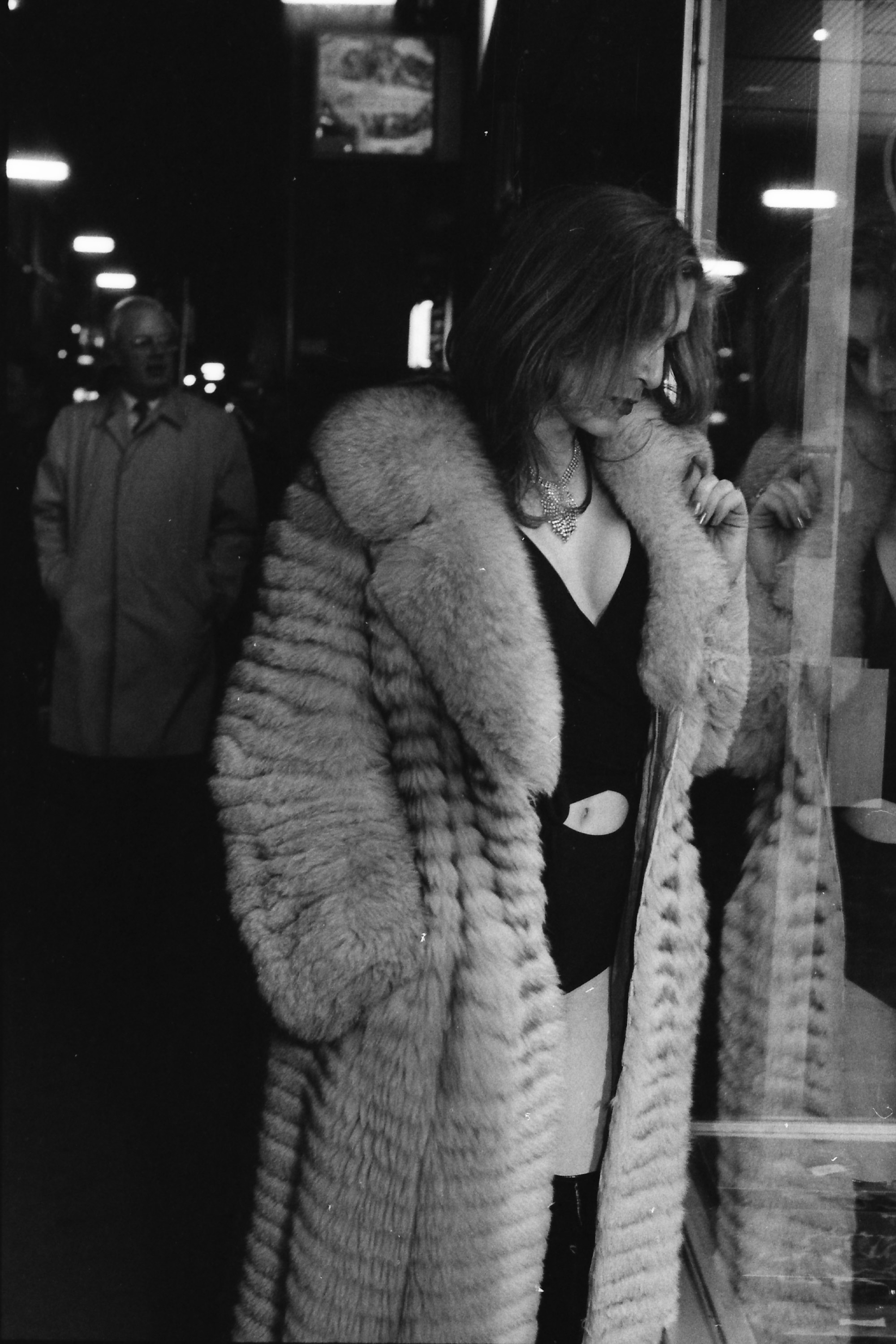
And it was really so wonderfully exciting and different and it just gave you a real ‘flip’ in life, if you were a gay man. I can’t talk about straight men, I don’t know how they felt about it, I wasn’t attracted to the women but they were so glamorous and show-bizzie, that Soho was a real complete life in itself.
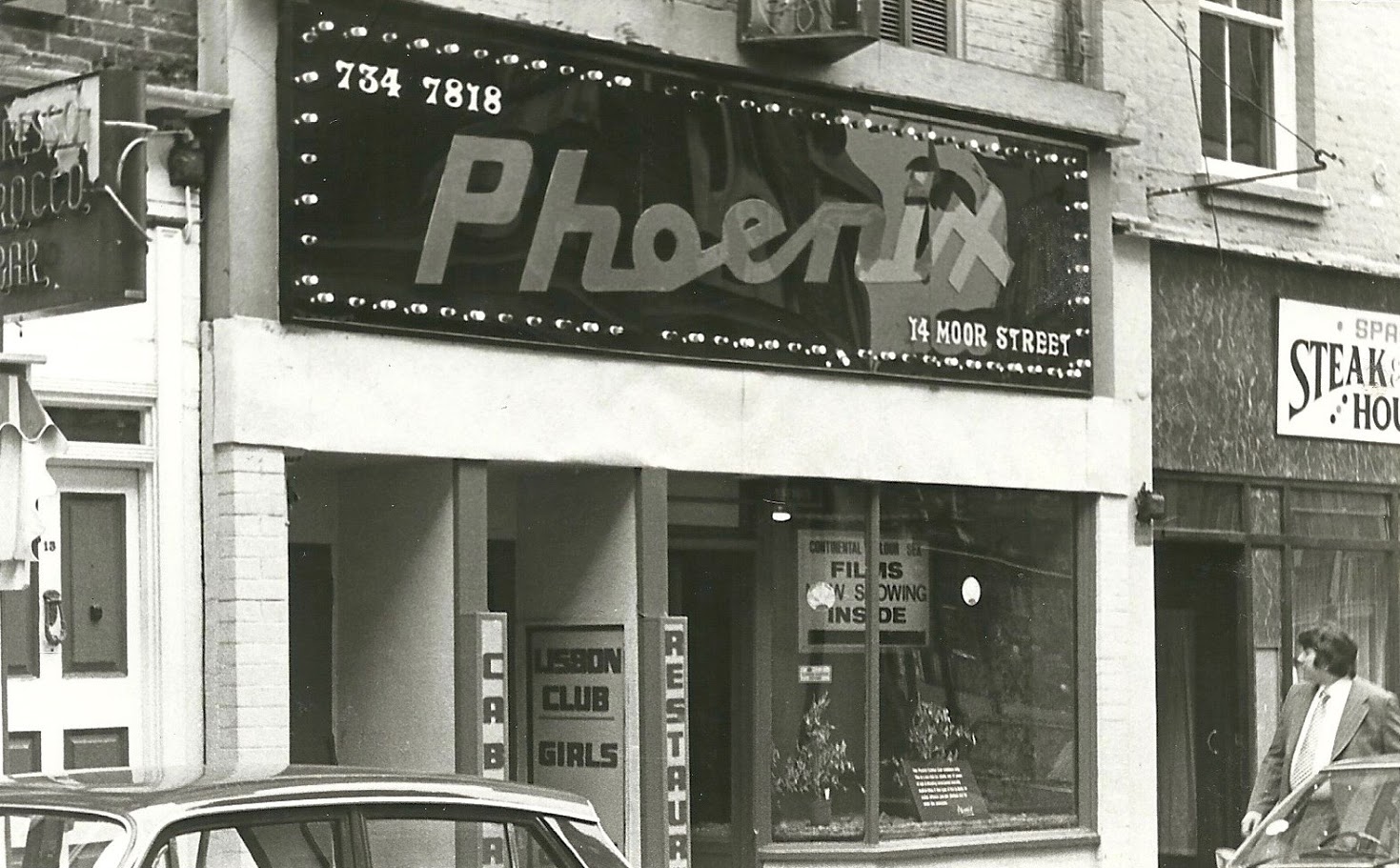
But there was some really dodgy places like the Phoenix in Greek Street, where the girls were still not allowed to move in the 70s, which had been the law since the war. Some were allowed to move, ours were allowed to move, but theirs weren’t. And you’d have this dodgery old curtain would close [creaky sound of curtain closing] and then it would open again and the girls would be suddenly in their bikinis and then it would stagger closed, because they weren’t allowed to move, and they’d take everything off and then stagger open and there’d be a horrible vinyl sofa there. And they’d just be going, “Oh this is boring, nah, nah, nah…” [laughter] And it was just horrendous. But people just seemed to enjoy it. It was the naughtiness, the thrill I think, because there certainly wasn’t anything sexy about it… well… [laughter]
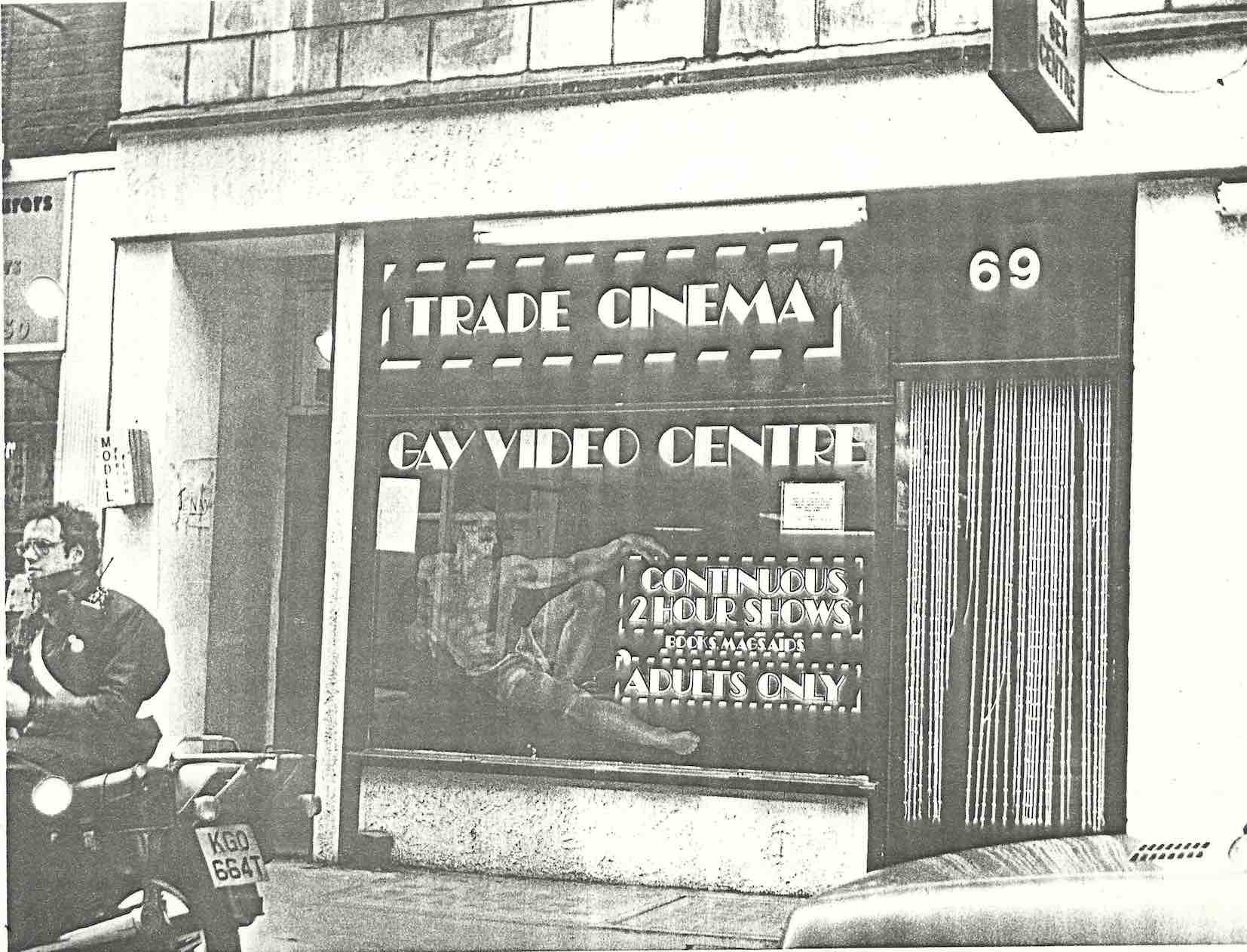
Alex Duncan: And Soho had one or two or three strip tease clubs which were boys stripping. Well, when I say ‘boys’, I don’t mean children. I mean young men. This makes me laugh, there was one, it was at 69 Brewer Street. You went in, paid your fiver, and you went downstairs. And there was a stage and disco music and the guys did disco stripping, just like the girls had done for a thousand years.
Leslie Hardcastle: Peep shows, the room was like a 50p piece with eight sides. In each of the little sections, as you just get in, was a letterbox, big letterbox, that had been adapted. And if you put half a crown in, the letterbox went up and you saw a lady in the centre, with no clothes on, dancing. But the thing that always got me was actually seeing all these eyes, these desperate eyes. Because suddenly the thing would go down, you put another half crown in, go down, another half crown in… [laughter]
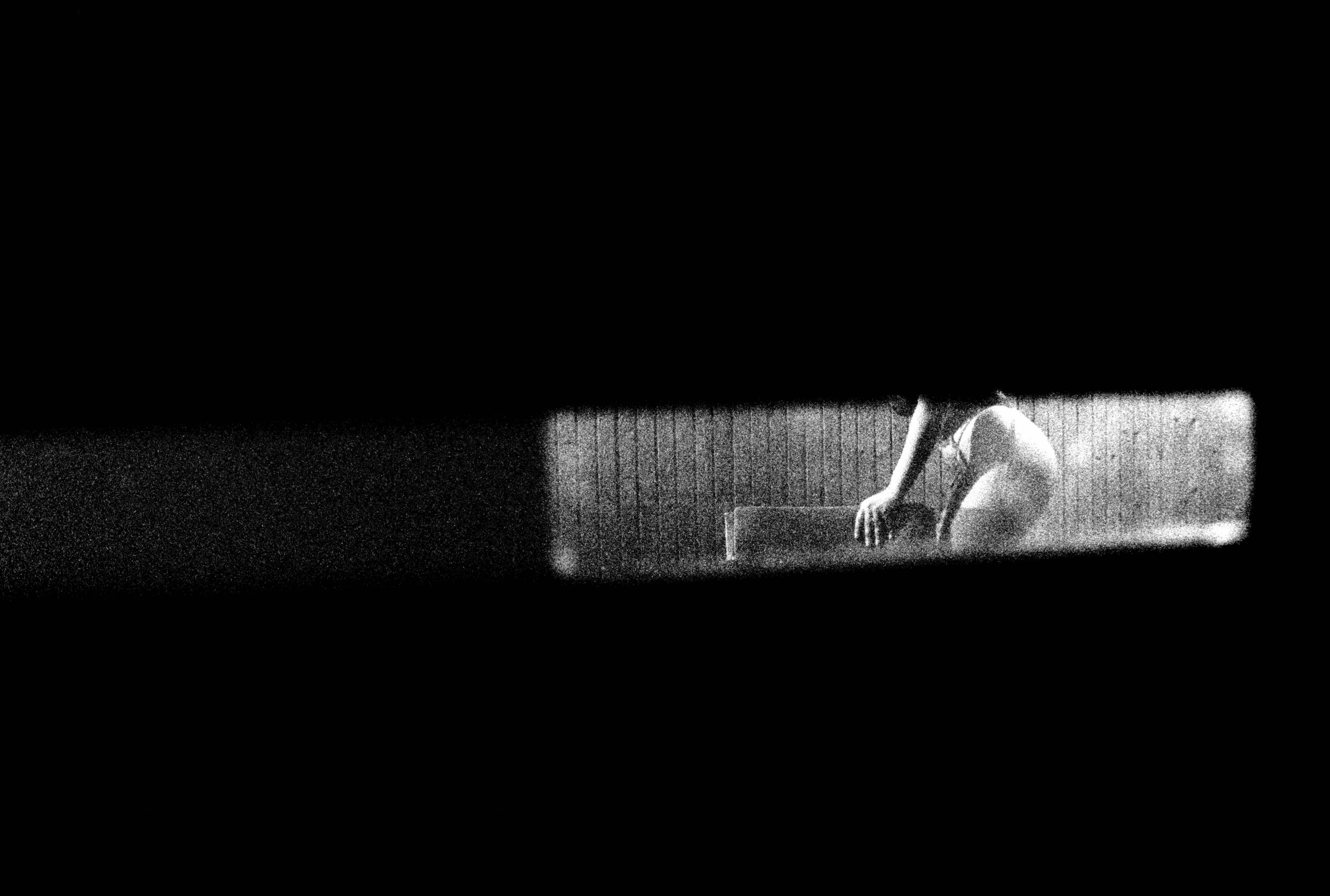
And I always remember there were two girls there, dancing, and one was a black girl – she came in and she said to the other girl who was dancing, and I could hear because she was near me, she said, “I’m going out for some sandwiches now. What would you like? Would you like a beef sandwich or a cheese? Yeah, ok, alright – I’ll pay you later…” And then all these idiot men, looking at these women, who must have been bored… probably caught a cold…
Lesley Lewis: [laughter] I got to know the girls, they were good fun, they were good fun. And we had some great times, and some very sad times as well.
Yvonne Taylor: I think it was probably 1979 when I first went to Raymond’s Revue Bar and I met Raymond in Gerry’s at the bottom of Dean Street. I didn’t know who he was, I didn’t really know anything about the industry but he said, “Oh, I own a club. Do you want to come?” And so I ended up in Raymond’s Revue Bar and I was like, “Whoooaaa…”
Lesley Lewis: Strangely enough these girls a lot of them dreamt about working for Paul Raymond because that was class if you were a stripper. That was the top of the range, there. But they weren’t going to get there. He had proper dancers. You know, it was a very good show, I did go and see the show to try and get some ideas but my girls couldn’t have coped with what they did, they were a class act, they really were…
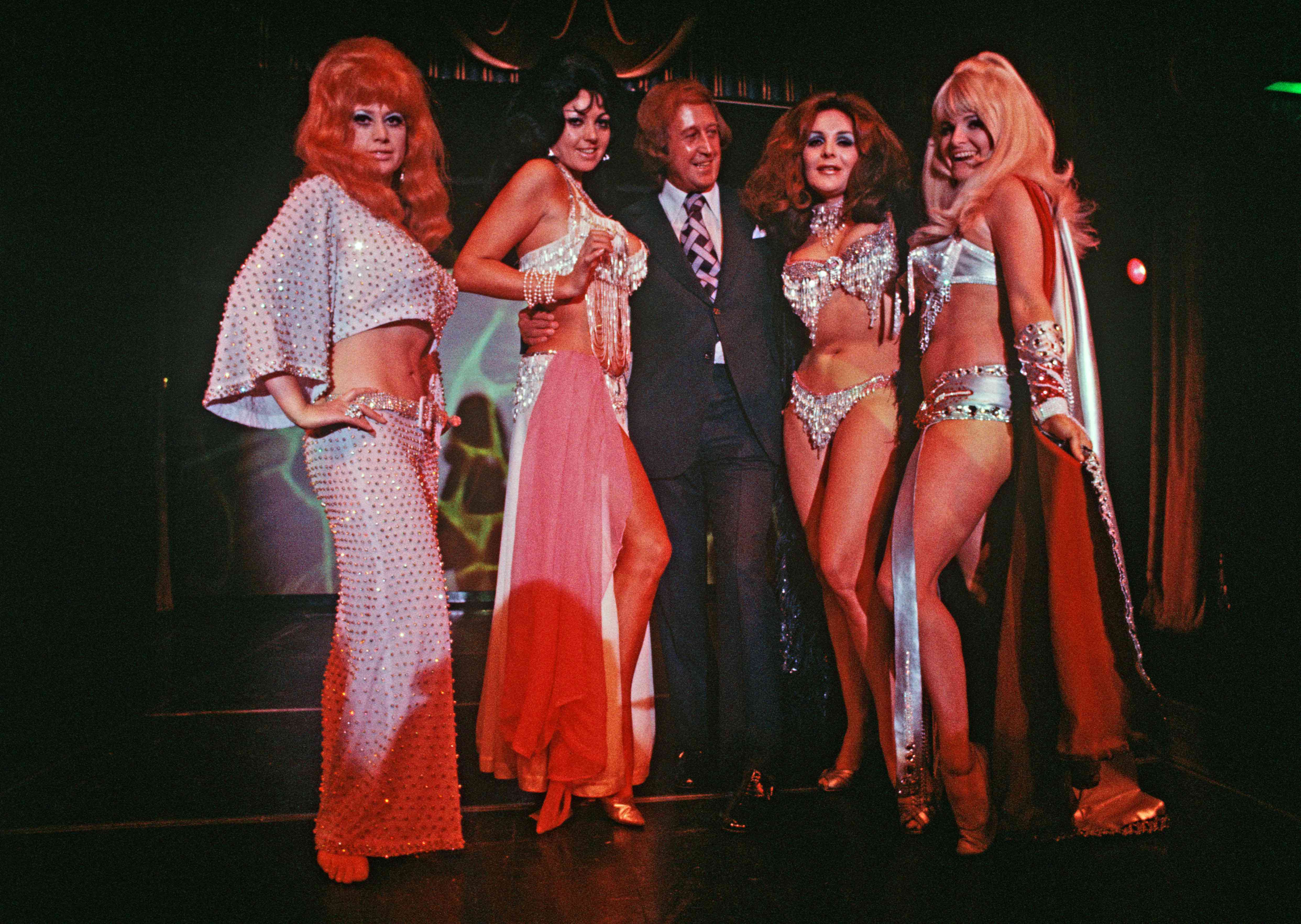
Yvonne Taylor: It’s like a big room, it’s got like this little stage, it’s got tables… a bit like this little theatre-y thing. Nothing particularly glamorous but it was a lot better than the clip joints.
Carl Snitcher: The Raymond Revue Bar held about 220 seats. We had a real problem with touts, people who used to stand at the corner of Walker’s Court preventing people from going into the Raymond Revue Bar saying to any unsuspecting tourist, “You don’t want to go in there, come to Mr Raymond’s other place” and they’d be directed into this clip joint, it was terrible, it was just awful. And these people were employed by these clip joints. In the end, we had to take legal proceedings against them. We got injunctions against people, preventing them from coming in a certain radius of the Raymond Revue Bar.
Lesley Lewis: They’d march people off to cashpoints to get money or keep their watches if they didn’t pay their hostess fees. It was terrible! And it was quite violent. And the Maltese who ran most of the clubs were quite aggressive. And there was a lot of drugs and things like that.
Alex Duncan: Well you got the strip clubs and stuff, the girls come in. And it was so sad to see. They’re obviously advertising their wares, and the breasts covered in holes from the needle pricks, where they were injecting themselves in the breasts. It was horrible, absolutely horrible. That was the horrible part of Soho, the drugs, it really was. And you saw decent people, over the years, destroyed…
Lesley Lewis: There was a lot of beating up of the girls. And a lot of stage make up to cover the bruises so their children won’t get taken away from them. Or they slash their wrists because their husbands were so awful to them. There was a lot of great sadness. And there were lots of places weren’t allowed in because we were to do with striptease.
Alex Duncan: Soho became more of a sleazy place, I would say, and it became to be just a remarkable shadow of its former self.
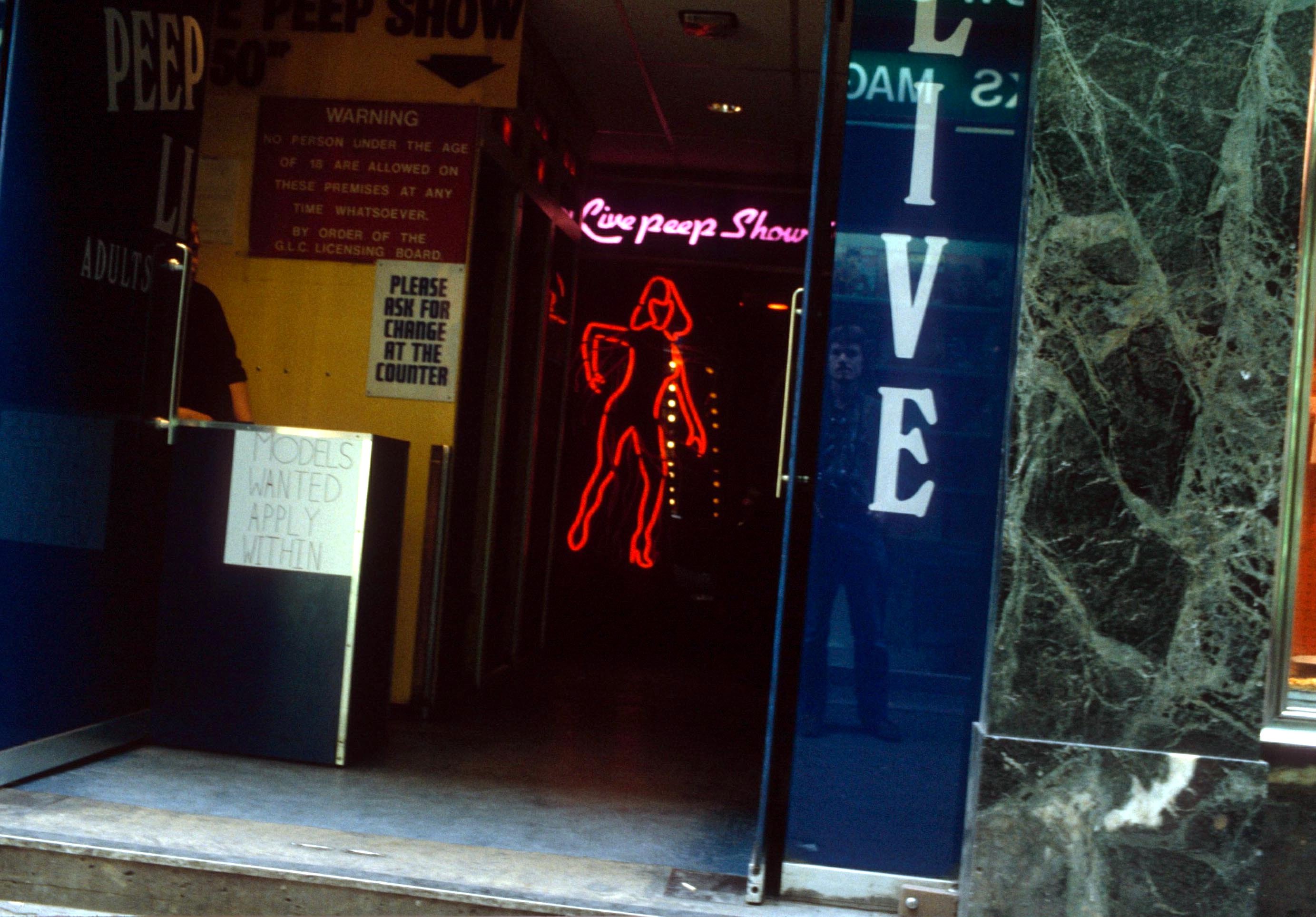
Lesley Lewis: It was all changing, it was getting more and more aggressive and a lot of the clubs were being closed down. There was a lot of violence between the clubs. The owner of ours, called Tubbs, had had his eye poked out by an umbrella in a club war.
Leslie Hardcastle: Whatever activity had come into Soho, whether it was tailoring, whether it was film making, didn’t destroy what was there. But the sex industry was destroying the whole area.
Lesley Lewis: There were so many sex establishments of all descriptions.
Leslie Hardcastle: It started with cinemas, they ran them as clubs. But they didn’t run very good clubs, as far as the law was concerned. But they were a club so they could get away with it.
Alex Duncan: Compton Street – there was a great big picture, huge hoarding, of a girl bare-breasted. And that cinema showed European films, with girls running about topless and things like that. Never men running about bottomless by the way, always women running about topless.
Leslie Hardcastle: Next to them, there would be just a bookshop.
Tony O’Loughlin: In the later days, there was a gay bookshop opened a few doors away from me. But I mean people would sneak in there, sneak in and out.
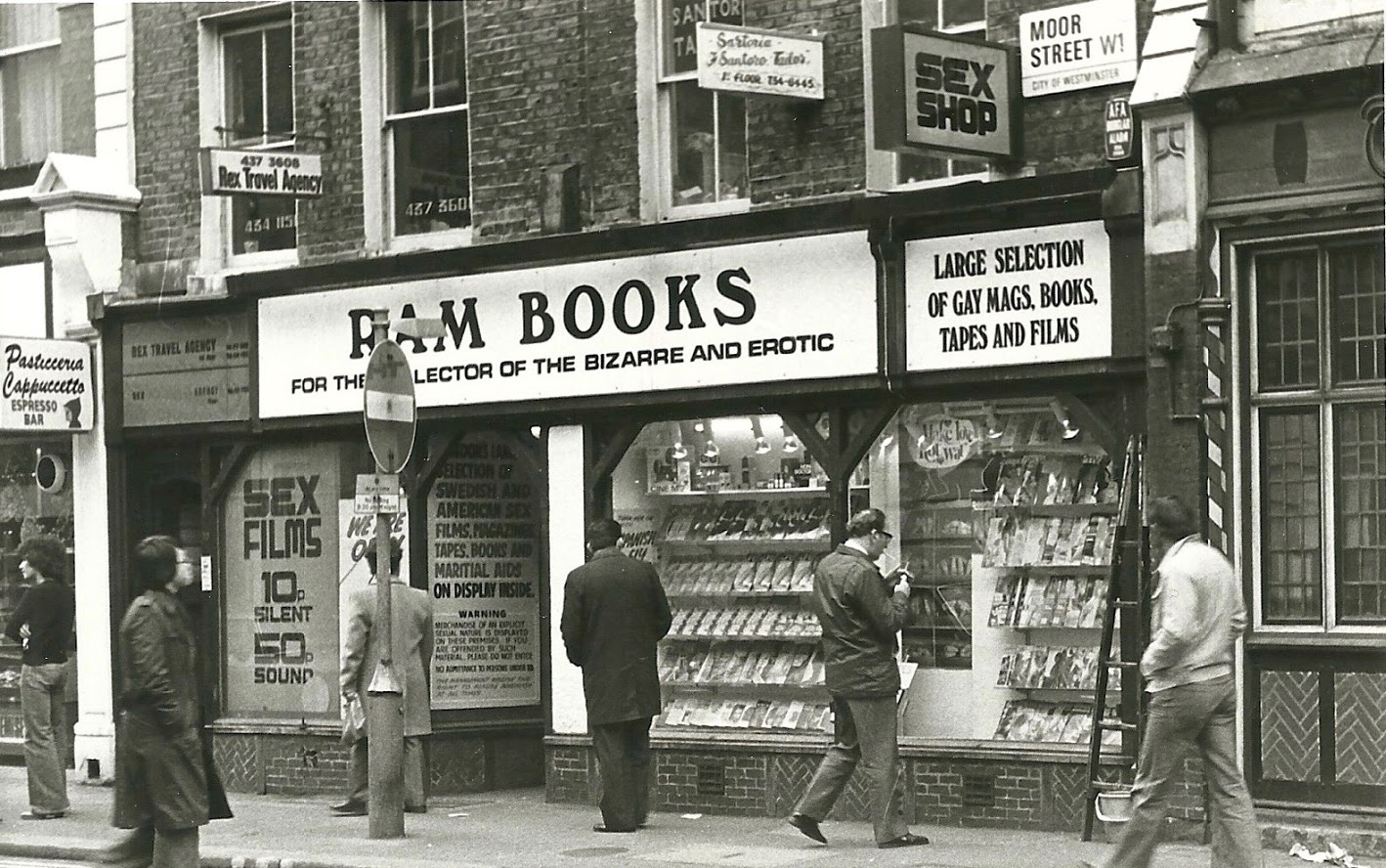
Alex Duncan: In the 70s, when homosexuality was legal, if you like, we then had stores or shops that are two bob in the slot and you saw a moving picture. And the moving picture for the first time was men having sex. And that evolved into, not only the machine, you went into a cubicle and you saw it on a bigger screen.
And one that I remember was right on a corner at Berwick Street Market, but no it was the corner of Peter Street, and that had big booths where you went in. And there should only be one in at a time, but sometimes there were two in at a time… [laughter] But then, as I saw it, men went to strip tease cinemas, why couldn’t gay men go to gay cinemas? I mean, but we were made to feel ashamed. You see, it was one at a time. Well, nobody ever said to straight men, “You can only go and watch that strip tease one at a time.” And this was the hassle, the constant hassle, of being a gay man. Even in London, it was honestly difficult. It was frowned upon for such a long time. But it added to the excitement of Soho, that’s all I can say. It added to the excitement of Soho, it was lovely.
Leslie Hardcastle: And then you’d have photographing nude women. And if you didn’t have a camera, you could go next door and hire a camera to take your photograph. It was completely crazy.
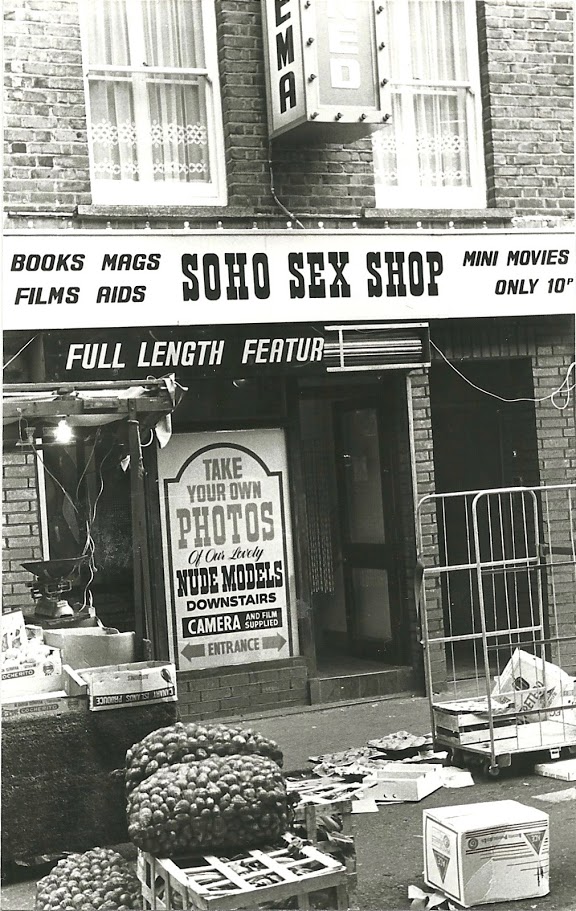
Alex Duncan: Truly, Soho at that time, it really left nothing to the imagination. It was sex every step of the way.
Leslie Hardcastle: How do I know about all these things? I do because I went to all these places and the only reason I went to these places is because we were trying to close them down and when you went to court they would have a QC to make a fool of you and say, “You don’t know what you’re talking about, you don’t know what it’s about.” And I would say, “Oh, yes, I went in…” and this and this and this. I became an expert in sex shops. And the thing that fascinates me, they were all selling the same book! You’d think they’d have different books! So what are you really selling?
Alex Duncan: It was a very very sexually charged place. But there was a big sexual clampdown.
Carl Snitcher: I remember the Soho Society and I can remember even people like Leslie Hardcastle saying they didn’t want to sanitize Soho, they all accepted that Soho was a wonderful mix of different cultures, different interests and was kind of a naughty place.
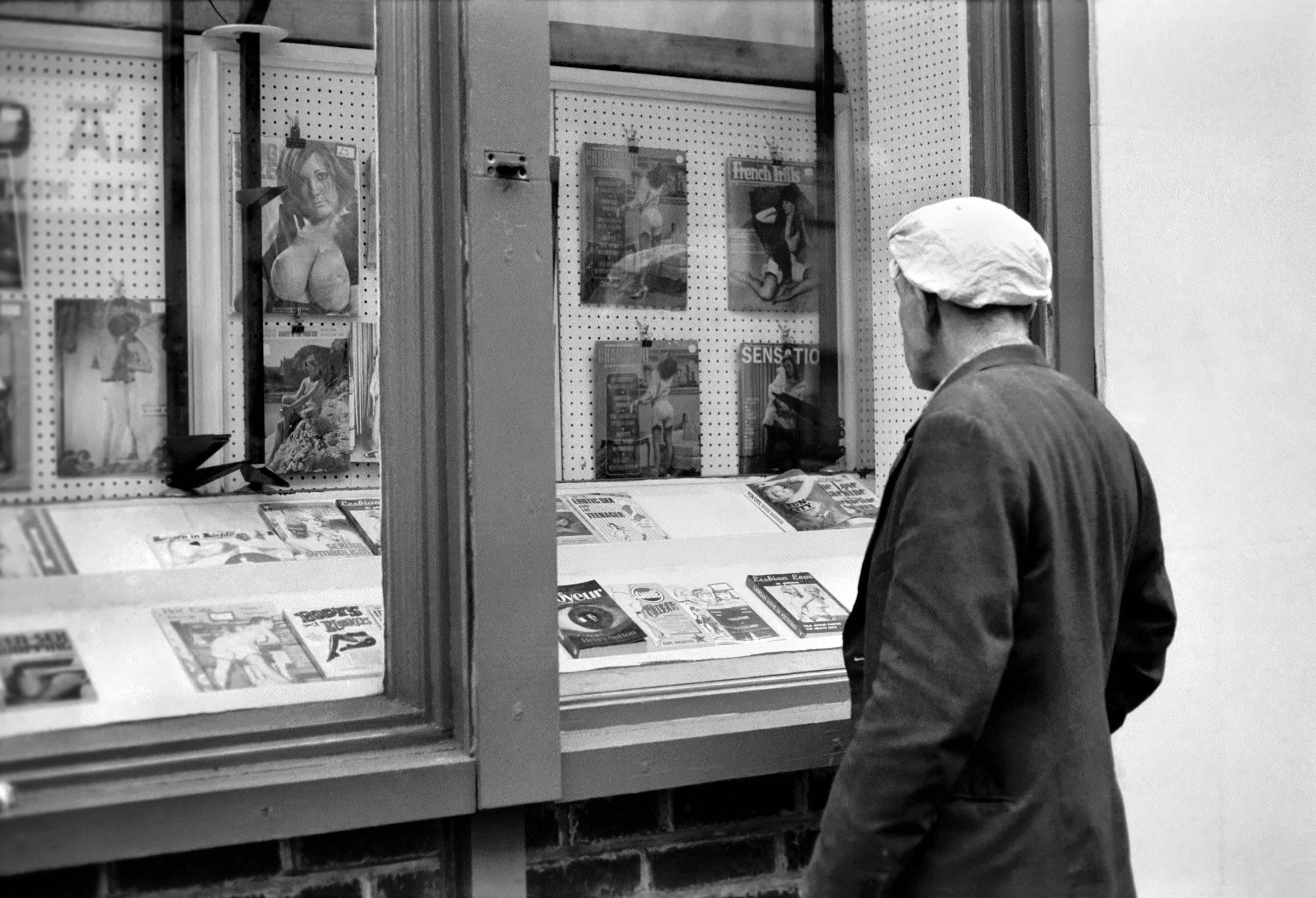
Leslie Hardcastle: In our opinion, it had nothing to do with sex. It was about laundering dirty money, it was about criminality. We knew that at the same time there was, at the same time, an investigation going on with police. Four leading police people, the head of the flying squad, all got eight years each. About 180 policemen got sent away from Soho. And they, I think at that time, put a woman Superintendent in there, we thought was a pretty good idea.
Alex Duncan: It was a money kind of business then, it wasn’t an enjoyment for us. It was more of a commercial scene.
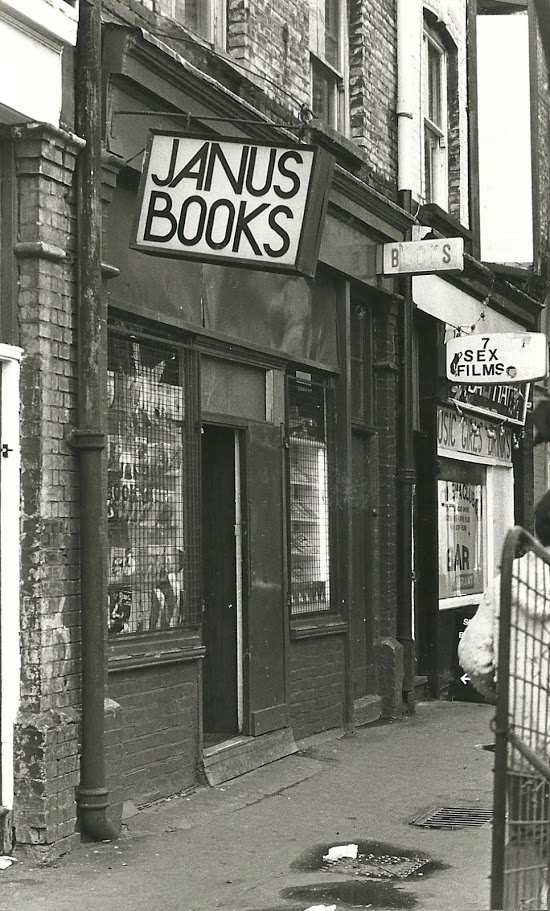
Leslie Hardcastle: The Soho Society had a brilliant idea. They said, “We’re not against sex shops, they probably fulfill a useful service.” We just said, “They should be licensed.” We ended up with 184, that’s a lot. The whole area was changed because of this proliferation of shops. So the one thing, they couldn’t be licensed because they were all rather doubtful in their ownership. And I think finally we got down to about 30 licensed sex shops.
Lesley Lewis: I just remember a lot of places being closed down, really. It wasn’t considered a good thing at the time because a lot of people were out of work.
Leslie Hardcastle: We’re not talking about prostitution. It was an entirely different kind of thing.
Carl Snitcher: They tolerated and were quite happy with those premises where there were “Models, 2nd Floor” and things like that. Everyone knew what they did there. It’s much better than street prostitution.
Alex Duncan: Every little staircase in Soho had a big sign saying “Model” – sometimes prices, sometimes nationalities, never any pictures! Every staircase. And windows with red lights.

Mark Larney, stage name Minnie Diamond CBE: You walked in and there was like a staircase, a little narrow staircase. And there was doors. And one door would say “Blonde DD” and another door would be “Brunette” or where my friend was, it was “Transexual” – pre-op or post-op, it all depends on who was in at that time. And you’d go up and there’d be a tiny little kitchen and a big massive room with a double bed in. Basically it’s something you’d see in the 1960s, someone was living there.
Lesley Lewis: There was a maid usually, someone to protect them and to look after them really. In fact, one of my girls went off to be a maid when she got too old for stripping. But there were also the street girls, and there were the rip-off ones as well. They’d take some money and they’d say to the guy that they’d meet them at such and such a place and never show up… a bit naïve giving them the money in the first place, really…
Alex Duncan: Even in the afternoon, coming home from work, if you went up, there were girls on the corner, always smoking cigarettes and they would ask you, “Would you like any business, dear?” And lunchtime, “Would you like lunch dear?” And this was the kind of thing they would say. And you just accepted it. They were always very smartly dressed. This was the era of the beehives and not a hair out of place, lots of make-up, lots of make-up. False eyelashes everywhere, I remember. And, always wearing high heeled shoes. They were very, very smart women.
Tony O’Loughlin: There was a hairdressers in Berwick Street and they all went there to have their makeup and hair done every morning.
Martin Borowick: Ladies who were prostitutes but in those days they were ladies – they would speak to you, very nicely brought up, and spoke properly and I would walk past and “Hello Martin, how are you?” “I’m alright, Mrs [whoever it was]” We had two madams [laughter], living above the shop during the war, and they looked after my grandfather.
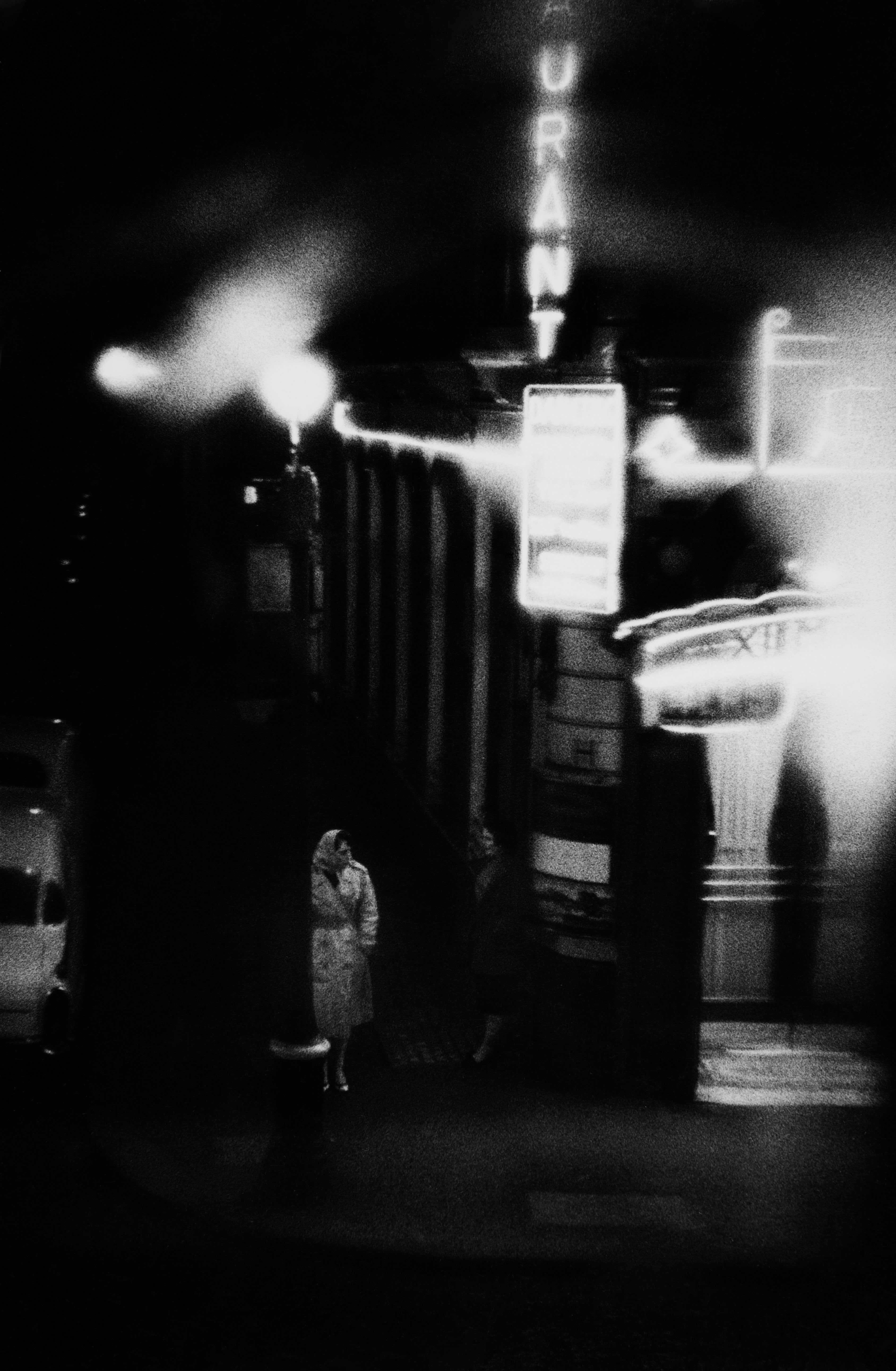
Rina Rottonda: We never took no notice of them. They used to talk to us and they use to give us a couple of coppers and we used to buy sweets. We didn’t care. I mean, we didn’t care who gave us the money as long as we got it. Our mum couldn’t afford to give it to us because money wasn’t plentiful so that’s how we got it.
Dorothea Phillips: There were quite a lot of ladies of the town, lying around the streets as you could imagine. And we all knew each other, we used say, “Morning!” etc. And they would say, “Oh… how are you, Dottie? You alright, are you? Oh right…” Seriously, you’ve got no idea. It was camaraderie around the streets.
Tony O’Loughlin: I got to know all the girls, the prostitutes and so on. And they were absolutely decent people, absolutely decent people. There was a brothel next door to us, more or less, and they were really lovely ladies. They were French. And they’d have two weeks on and two weeks off. They’d go back to Paris for two weeks.
But then, one of the locals who was on the corner of Romilly Street, I think it was, she got burnt out by one of their local gang guys here. He wanted the place to put girls in. And she was burned out of there so… she was very nice, Stella. She was in her 50s then. She came in to me one morning and she said, “I’m all excited, I’m all excited”. And I said, “What are you excited about?” And she said, “I’m going for an interview for a job next door.” She’d got the job there and she was thrilled to bits. She’d come out after work and sit there and wait for her husband to collect her from work. It was just another job.
Yvonne Taylor: I met several women that worked in that sex industry and so what it did was enable me to have an understanding of what this was all about. Because, yeah, certainly where I grew up this kind of lifestyle was just not right. It kind of changed my perception about the working girls. I met women who were like, “Well, I’ve got to go to university, I’m gonna be a doctor, and this pays for it.” I mean, there was a lot of other things that went off within that but it just gave me an understanding about actually, as a woman, you could make a choice whether or not this was a lifestyle that you want to do. And it wasn’t always about coercion.
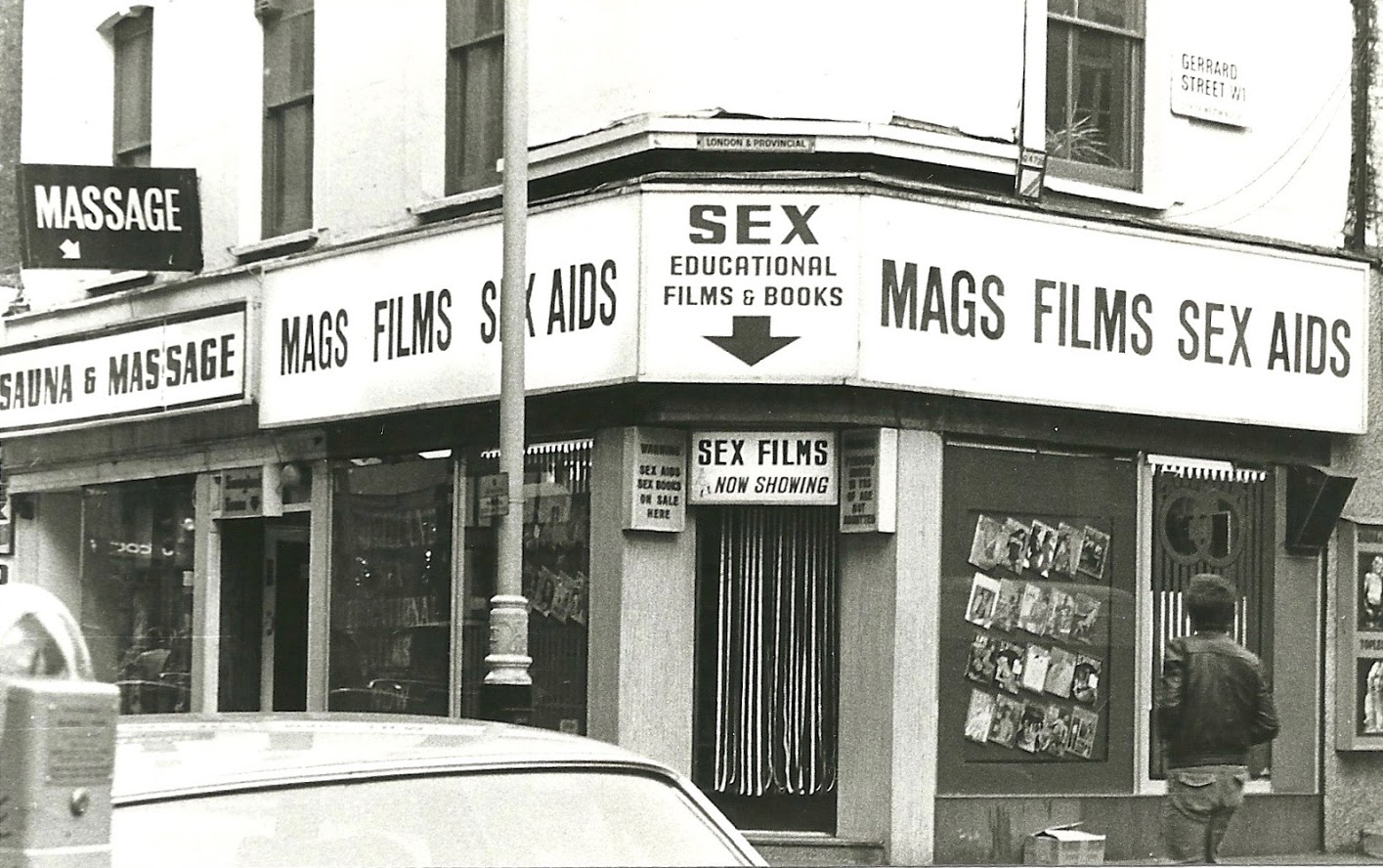
Tony O’Loughlin: She came in the shop one day and said to me, “Will you do me a favour?” and I said, “yes”, and she said, “I’ve never been in a sex shop in my life would you come with me?” So I said, “Yes I will.” And she said, “Well you know the devil?” and I said, “Yes.” There was a client that everybody saw in the street and he dressed in black completely with a tall black hat on him and so on and he'd march up and down Frith Street before he was ready to go in. “Well”, she said, “I’ve got to get him something special.” and I said, “What are you looking for?” and she said, “Come with me I’ll tell you.” And she said, “What I want now is a black rubber mask with two little peep holes for a nose only.” And anyway the guy said, “I’ve got it.” And she said, “Yeah that is exactly what I want.” and she said “Will you try it on?” and I said, “That’s it! I’m not trying it on! That’s the end of it!” But then she had to take that mask and cut two holes out in the cheek and go to Floris the perfumery or cosmetic place and go there a have a blue powder made up for his cheeks, for his cheeks. These were everyday stories. She had a client who was a great big truck driver and he'd come in with his Dinky toys and they'd sit playing on the floor for hours. That was it. And she would tell you different stories every day when she came in. We had such a howl, I loved Soho!
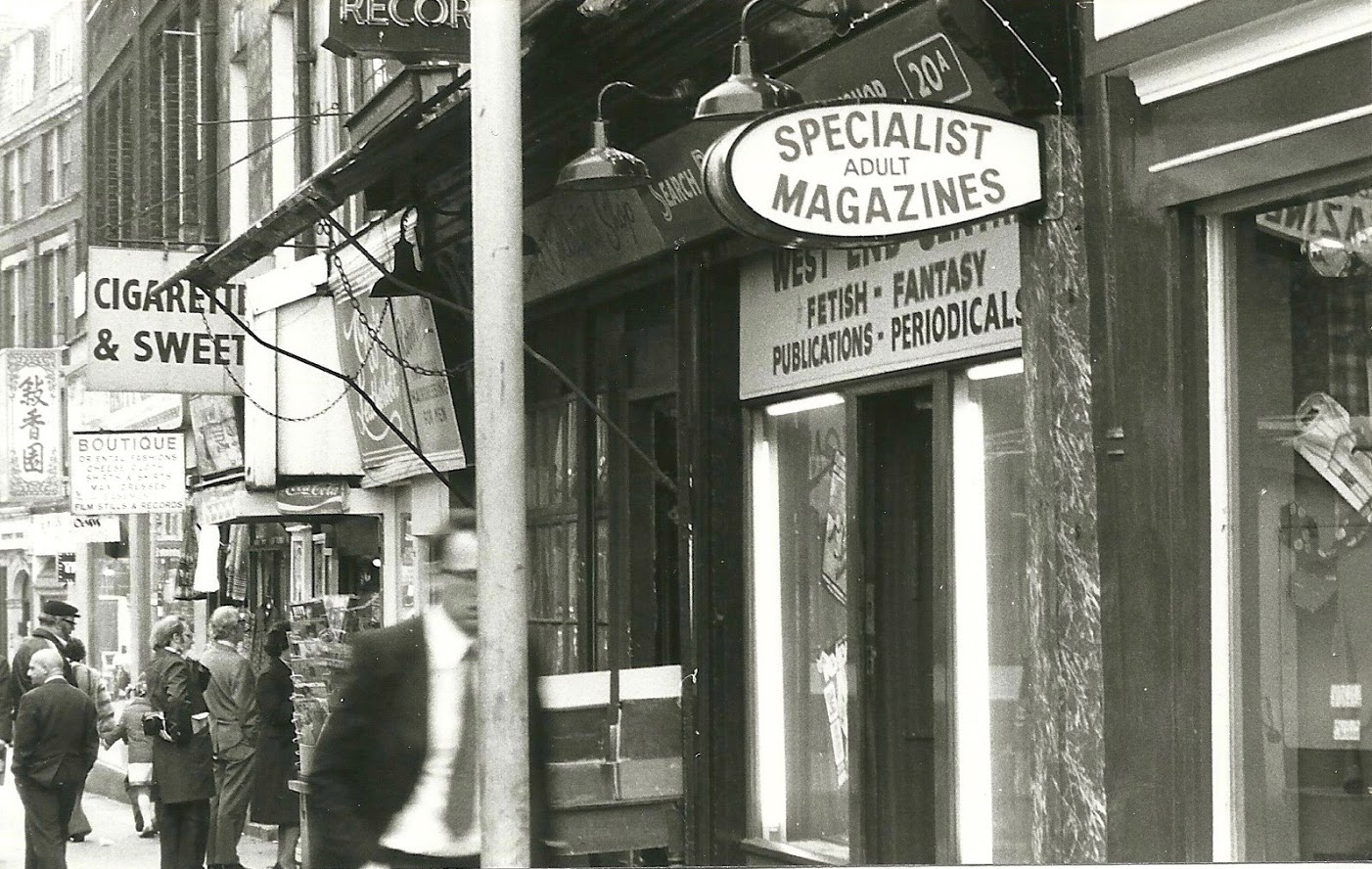
Alex Duncan: All these places were there. And they’ve all vanished in the night. And if you went there at the time, you’d never have imagined that they had been there. As I grew more ambitious and found my feet, I discovered that there were gay clubs. They weren’t called ‘gay’ in those days, they were called ‘homosexual’ or ‘queer clubs’. And there were quite a number of them. The pubs, though, you realized, everybody was male. There was absolutely no women at all. We’d never heard of things called lesbians. And almost every pub in Soho was a gay pub. ‘Gay friendly’ didn’t exist. They were either straight pubs or gay pubs. And the gay pubs were quite numerous. And when you went in, you felt at home. That was the wonderful thing. Because when I was a young man being gay was completely illegal.
Yvonne Taylor: I joined the army in 1977, we were at Guildford, and I think after our fourth week we got a weekend pass to go out. So myself and a friend we came into London and just hung around and tried to find all the things that were not happening in Guildford, where we were. I ended up doing a troll of like bars in Soho. It was grubby, very much the sex industry was operating well and truly in the neighbourhood. But it also had this kind of edge.
Mark Larney, stage name Minnie Diamond CBE: I was 17 years of age when I first came into Soho. I’d heard about it, saw it on tele, and stuff like that, but then I met some guy and he brought me into Soho for a drink. Bearing in mind I was underage as well. But it was fun.
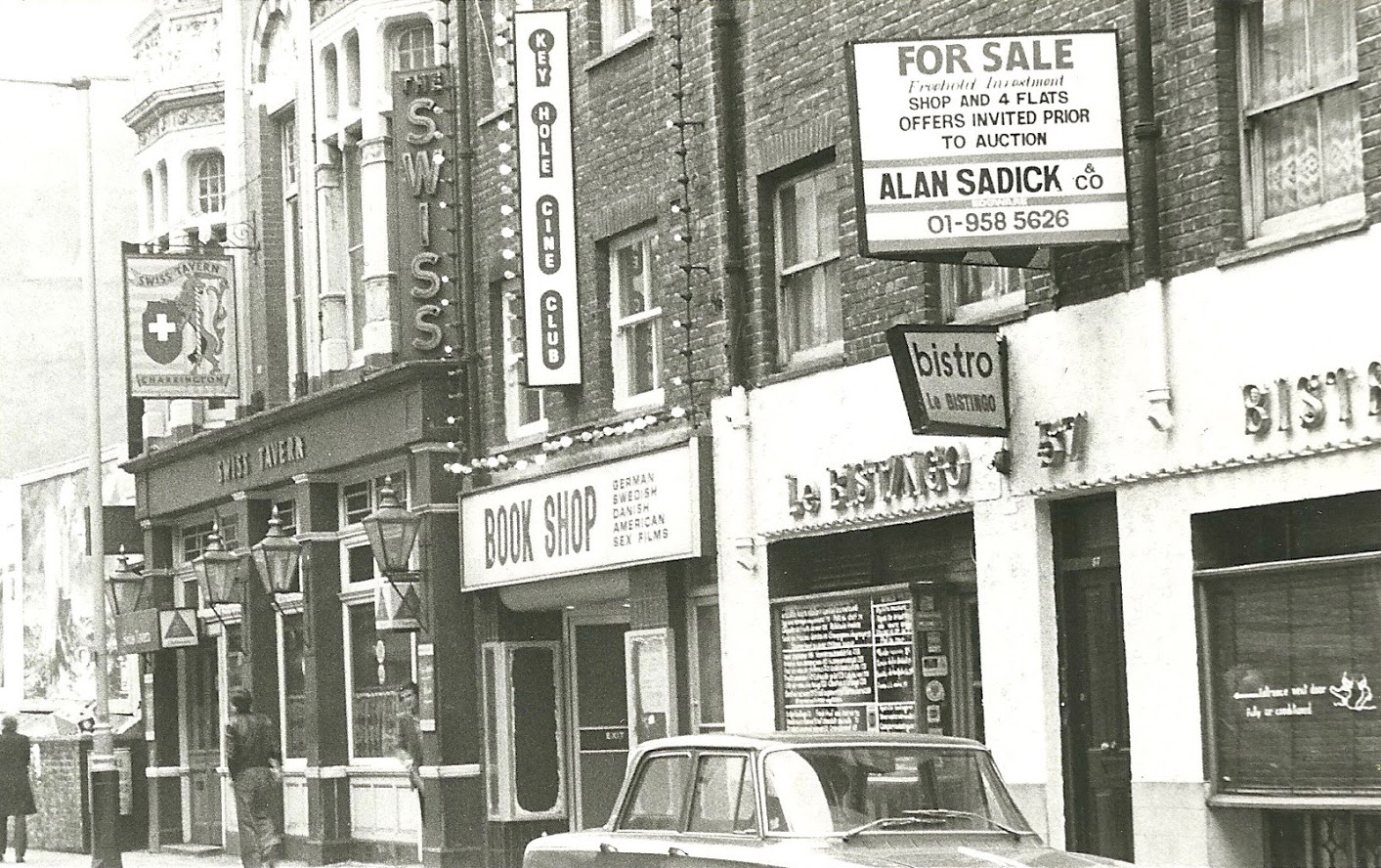
Alex Duncan: First gay pub I went to was Compton’s, which is still on Compton Street. I was a young man, so sex was on your mind. And it was a very, very what we called ‘cruisy’. You didn’t go in with your mates. You went in there for a sexual encounter. The men, well in those days, we were dressed formally. We had suits and ties. It was the 70s when it changed to the American jeans and cowboy look and all that kind of thing. But in the 60s it was very still, very business-like. And there were different pubs. Compton’s was more a down to earth pub. Each pub had its own kind of style, its own kind of clientele. And you got to know them and you frequented the one that basically you felt most comfortable in.
Mark Larney, stage name Minnie Diamond CBE: The first bar I went into was Compton’s on Compton Street. It was a shock ‘cause in them days it was what we call ‘clones’ and ‘leather people’. Because all the men were either in leather trousers or leather waistcoats or upstairs there was clothes, they had either jeans and checked shirts and I was really not dressed to be in that kind of situation. I was like that, it’s not my kind of place, definitely not my kind of place. I knew that was not my kind of bar, so I had to look for a bar to feel comfortable in. But being 17 and just coming out, Soho was like a massive, massive big area. And I was thinking, “Where am I going to fit in? How am I going to fit in?” But I knew I loved being in Soho but I didn’t know where I was going to fit into it, if you know what I mean?
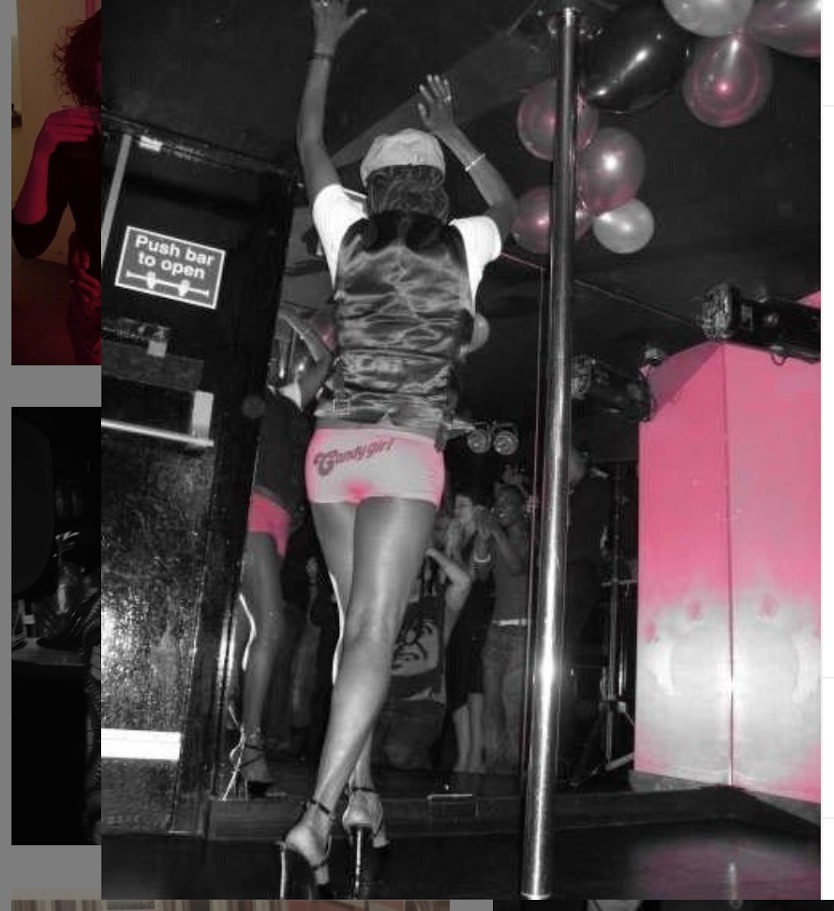
Yvonne Taylor: At the time I wasn’t really … I was just gay, whatever the words were for it. I was just one of those queer folk. And I wasn’t really kind of happy with the kind of social element of it. Kim Lucas rang me up one day and said, “Can you come and work in my bar? I run this women’s bar and we need some, I want some people of colour so that we make sure everybody’s all included.” There was nothing aimed at women, not in Soho, but this was a first in 1996. I don’t know how long old Compton’s has been there but it feels like it’s been there for all of my London life, you know, the Admiral Duncan, you know, and Balan’s. So when Kim opened that Candy Bar it did quite a bit to kind of break down the racial tensions between lesbian women.
Alex Duncan: There were also clubs. Now the clubs were there in the evening. Gay clubs were either upstairs or downstairs. Gay clubs were never on the level. There was the A&B Club, you went upstairs in Rupert Street, The Fountain, down at the bottom of St Martin’s Lane. Those were gay clubs where you didn’t have to become a member but you knocked on the door and sometimes there was a little spyhole, and they looked, and you were let in. It was all illegal. I can’t stress this strongly enough. Before 1967 it was illegal to be homosexual. Just even to be homosexual. The police used to raid places quite a lot.
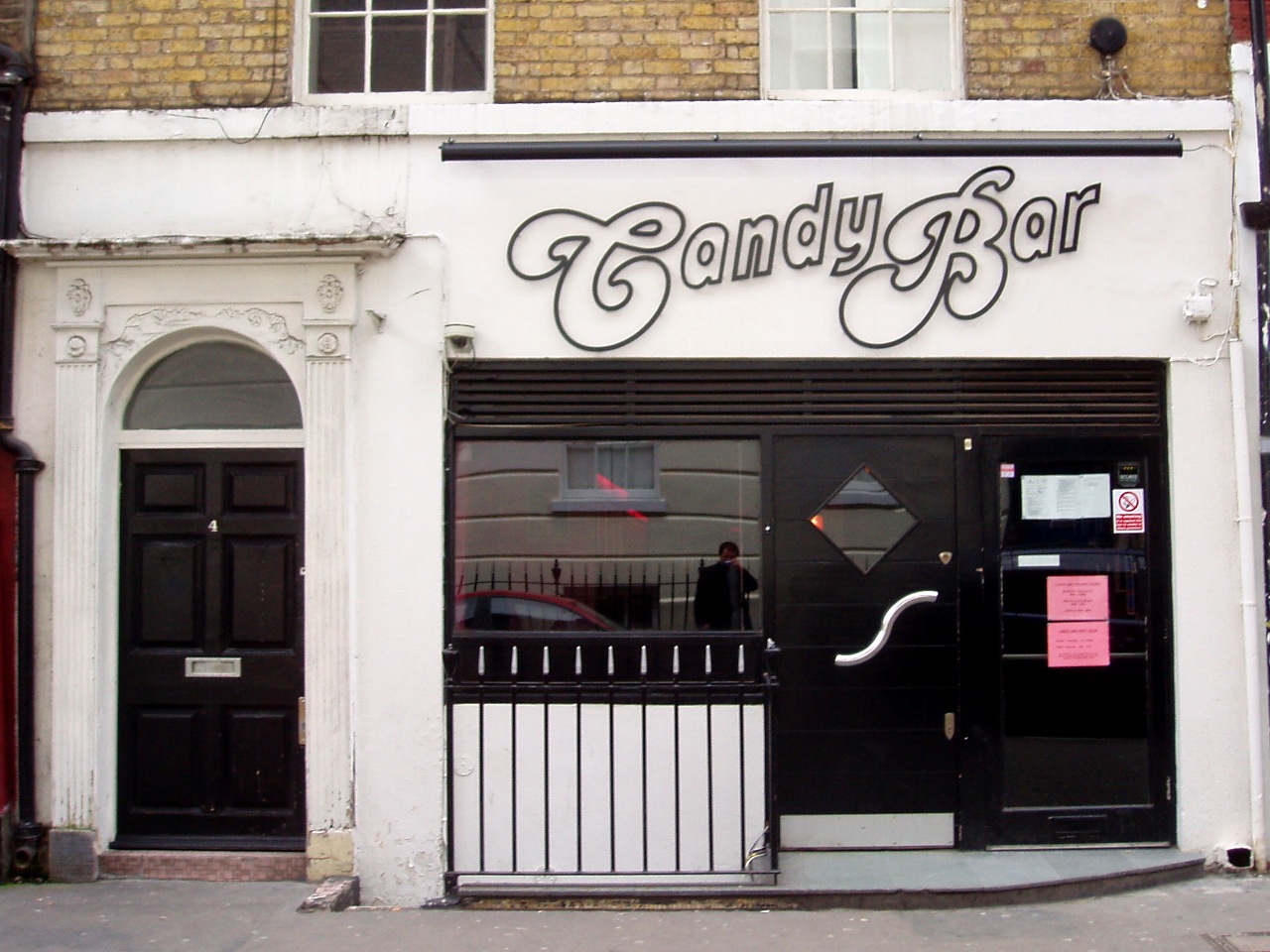
Yvonne Taylor: The Candy Bar was on Carlisle Street. You went in there was a long bar, that was the main area, there was a little basement club… typical Soho basement club. And then there was an upstairs bar that she had in various guises. But you know, it was kind of like the hub because all these people that ran all these clubs and did all these parties, like Princess Julia, Wayne Shires… Fat Tony… all those people that were around on the scene suddenly were converging in this bar.
Alex Duncan: There were public toilets, I don’t know whether… [laughter]… because normally you could only find gay partners in pubs really, and some people didn’t drink, some people didn’t want to drink. So obviously the only other place were public toilets. Now the public toilets in Soho were full of men looking for other men. And they were raided constantly by the police.
Mark Larney, stage name Minnie Diamond CBE: This place in Soho, called Compton’s Café, and it’s open til 3 o’clock in the morning, we used to go up there and have a coffee. And that’s when I started to notice a lot more gay people up and down Compton Street because it was like a catwalk for them. They would walk in the middle of the road up and down.
Alex Duncan: Most gay guys left home, for the simple reason that we were not comfortable living our lives at home. London became a magnet for us. Soho was the double magnet.
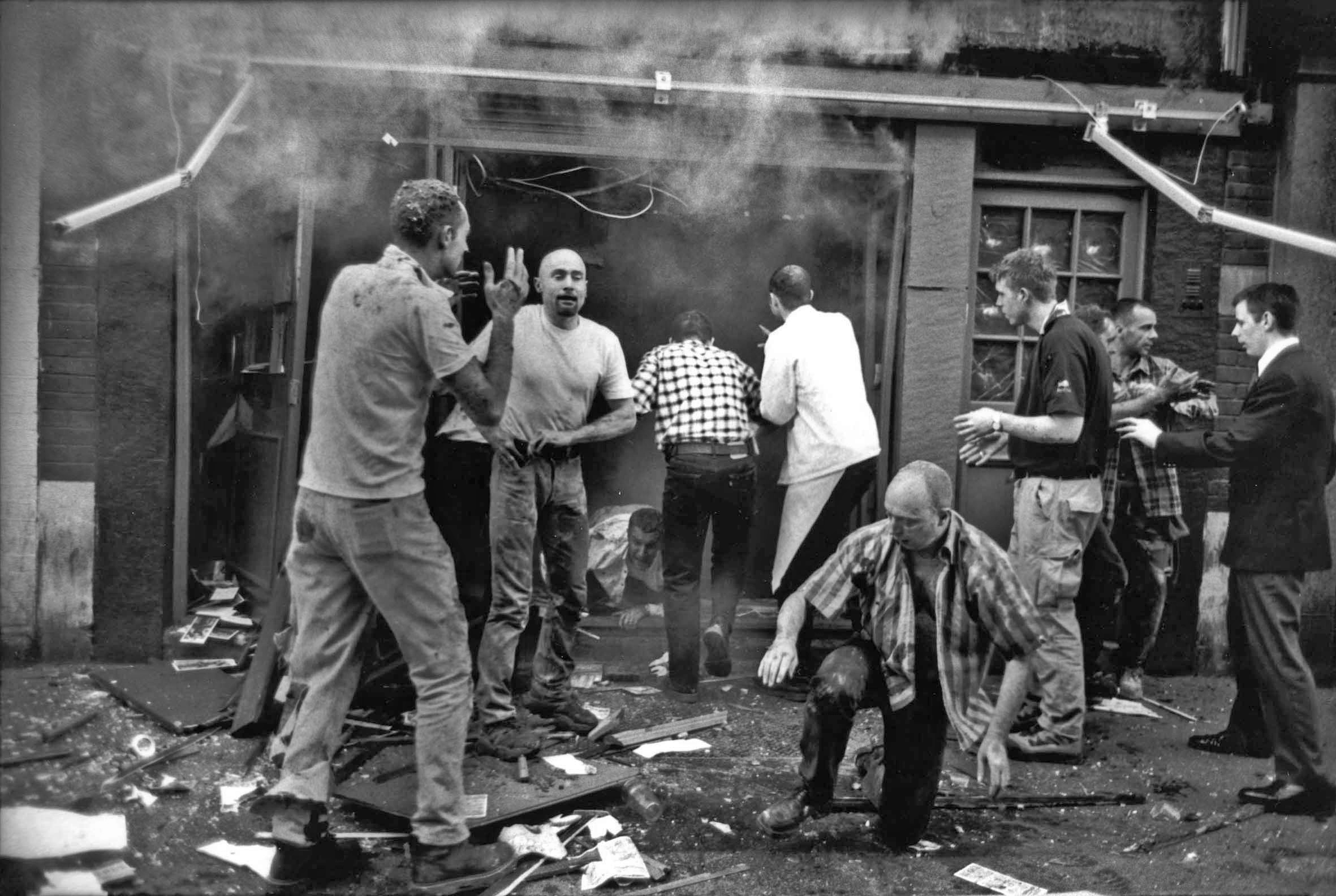
Minnie: When we had the Admiral Duncan bombing I was supposed to be in Soho and I was at work and on my break I had all these missed calls and texts saying “Where are you? Where are you?” And I was thinking, why what’s going on and I found out about the Soho bombing.
Yvonne Taylor: What can I say about that day bearing in mind we were just at the end of Dean Street, so just up the road. I didn’t even want to go and see what was occurring so I just left the bar and went home. One lone shark that decides that he wants to go and get everything that’s not in his world acceptable. It actually just makes me really upset to even want to think about it.
Mark Larney, stage name Minnie Diamond CBE: I was in Soho the next day after the bombing. I thought no ones going to stop me from coming in. I think the gay community were shocked by what happened but being the gay community they got together and said, do you know what. it’s not going to stop us. And I think Soho people as well thought its not going to stop us so they carried on opening the shops and the bars and the cafes and if you look at the footage in them days everyone in Soho came to the rescue as well that day.
Yvonne: But the whole atmosphere in Soho the following weeks was a bit heart wrenching. I went on a few remembrance day things and it was really quite heart wrenching, the sadness of it all. Then I thought is there anywhere, anywhere in this country, my country, that is anywhere as lively and supportive of different types of sexuality. It definitely wasn’t happening in any of the places I went for my army postings, and it definitely wasn’t happening in my home town in Nottingham. Then I came to Soho and I thought Ok this is not perfect but at least there is a buzz about it of difference.
Mark Larney, stage name Minnie Diamond CBE: Discovering yourself, I discovered Soho but actually it made me discover myself.
Yvonne Taylor: For me it was about having choices. I’d already made a difficult decision, we’ve all made this difficult decision that we’re going to stand by. So my sexuality is not the issue. It didn’t mean I didn’t want to stop being part of the bigger social scene. It just so happens that Soho was pretty much run by gays and arty people and some odd freaks.
Alex Duncan: Because Soho was a unique area, you really did meet men from all walks of life. Nobody told tales, you felt free, you felt easy, you felt you could be yourself. And nobody was going to tell the police, nobody’s going to ring up your mum. Nobody’s going to do anything, nobody’s going to blackmail you or anything. It was just a wonderful, wonderful place.
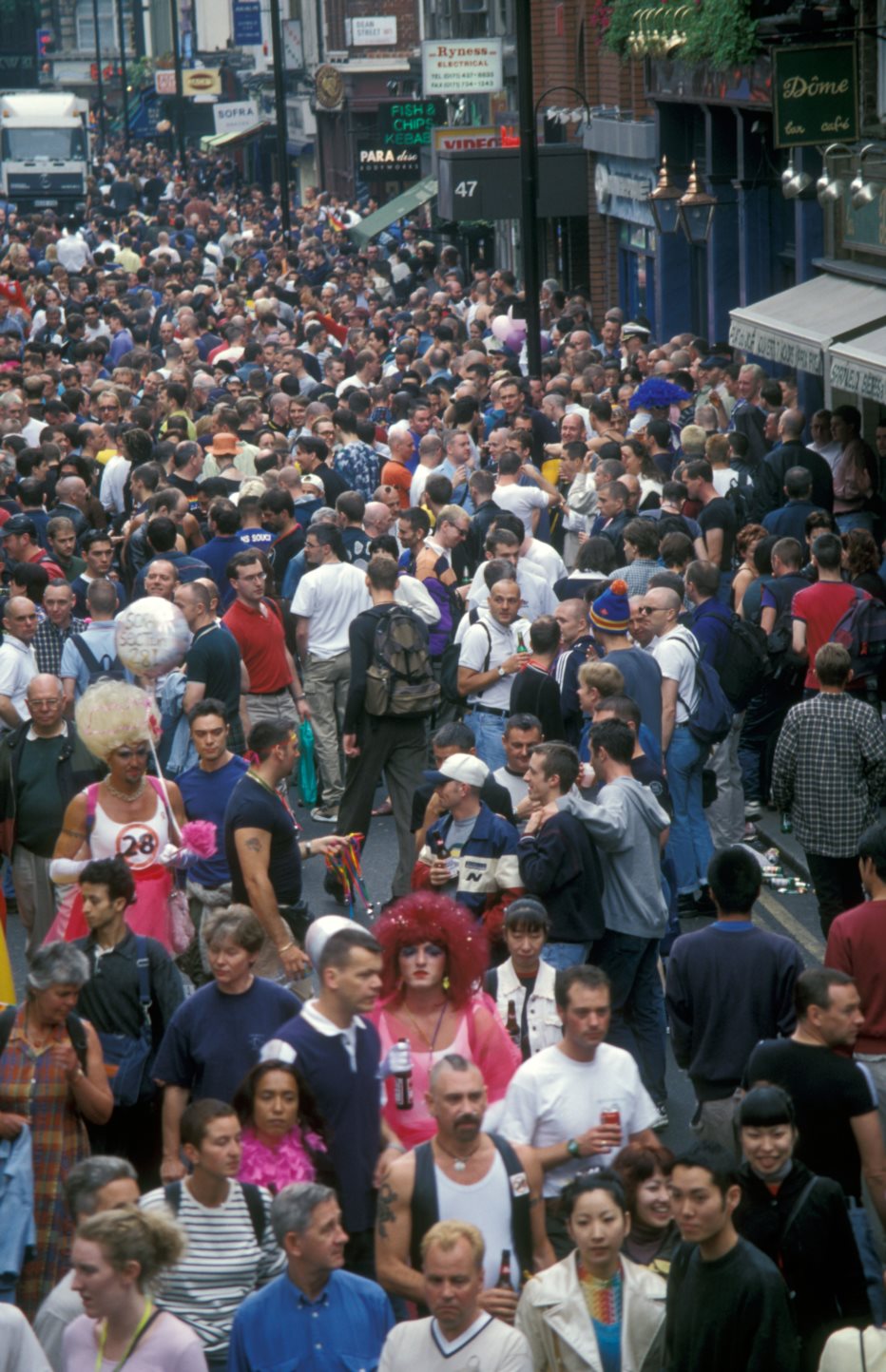
You’ve been listening to the voices of Alex Duncan, Lesley Lewis, Leslie Hardcastle, Yvonne Taylor, Carl Snitcher, Tony O’Loughlin, Martyn Borovick, Rina Rottonda, Dorothea Phillips and Mark Larney, stage name Minnie Diamond CBE Diamond CBE, with added field recordings made by the Radio Enrichment Group at Soho Parish School. Soho Then is a photo-based podcast produced by Clare Lynch and commissioned by The Photographers’ Gallery, a Soho-based public gallery dedicated to photography. Soho Then is s financially supported by The National Lottery through the Heritage Lottery Fund and #MyWestminster Fund. With thanks to National Lottery Players.
Thanks for listening and if you enjoyed the Soho Then podcast don’t forget to like and subscribe and tell your friends to listen too.
Music credits:
Hey Dolly, Jerry Herman, Barbara Streisand, 1969
Grace Jones, La Vie En Rose, Island Records,1977
The Stripper, David Rose Orchestra, MGM records, 1962
Henry Mancini, Arabesque, theme from Arabesque, RCA Victor, 1966
Tom Robinson Band, (Sing if you’re) glad to be gay, (Live at The London Lyceum, December 1977), The Anthology 1977-79, EMI
Toni Braxton, You’re making me high, LaFace Records, 1996
Diana Ross, I'm coming out (instrumental), written by Nile Rogers and Bernard Edwards, Motown, EMI Records, 1980
Piero Umiliani, Isola Tutto Fare, from the album Le Isole Dell'Amore, AMS Records, 1971
Grey Wizard, Spread Eagles (theme song), 1971
DRIVE, Disco Song, 1974